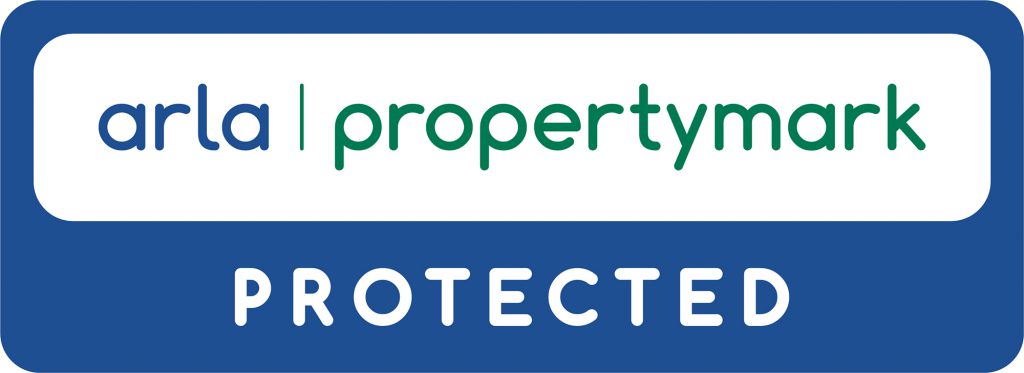Japanese Knotweed can be an issue when you’re looking to purchase a home and can cause lenders to decline a mortgage on a property with a known Knotweed problem. Our guide tells you everything you need to know about identifying and dealing with Japanese Knotweed.
What is it?
Japanese Knotweed is a weed that spreads rapidly and is part of the dock family. It has bamboo-like stems and small white flowers. Identifying it is not particularly easy, but the best time to do so is the summer. There’s some useful information on the web on how to identify Japanese knotweed.
It originated from Japan (obviously) when Victorian botanists recognised it as an attractive ornamental plant. It was subsequently brought to the UK in the late 1840s by Phillipe Von Siebold, who began to sell it.
What’s the problem with it?
The roots spread everywhere, they can extend up to 3m in depth and 7m in all directions. It can also grow up to 20cm per day. The problem is that it is so strong and prolific it can even grow through weaknesses in concrete and tarmac. This can pose a significant risk to properties and other built structures. There are also no natural pests or diseases in the UK to keep it in check, which means the weed can grow unabated.
How do I get rid of it?
You can start by trying to dig it out yourself, but if any trace of the root is left a new plant will grow again as it only need 0.8g of root to grow again. However, this won’t protect you from litigation and it might stop you getting a mortgage as any DIY removal works would not be backed by a recognised guarantee.
Usually the most cost-effective solution is herbicide treatment by an accredited professional Japanese knotweed firm. This usually involves regular foliar sprays and/or injecting the stems with a chemical. It can, however, take up to five years of repeat treatments for it to be successful.
Selling a property with it
Mortgage providers will generally not lend to a purchaser if the property has Japanese knotweed. However, most will accept a treatment solution provided by an accredited firm who can provide an appropriate ten-year insurance backed guarantee for their work.
Who’s responsibility?
The problem is if you’re selling the property you need to disclose the presence of knotweed via the TA6 Law Society Property Information Form, even if it has come from your neighbour’s garden. However there is a responsibility on a land owner to prevent any knotweed spreading onto other land or property. Therefore, if it has spread from a neighbouring property it is their responsibility, as has been proven in recent litigation actions. However there is no law stating that it has to be removed from a site if it’s not directly affecting neighbouring properties.
Expert Guidance on Identifying & Dealing With Japanese Knotweed
Japanese knotweed is an incredibly robust problem that’s not able to be controlled with traditional weed killers. Needing repeat application of industrial strength poisons, it can lay dormant for up to three years. The only reliable way to stop it spreading on a property is initially the hardest however once completed you should not need to repeat the activity. Often requiring a specialist grounds maintenance service with the appropriate means of disposal. The weed needs to be dug up carefully to ensure that no plant life is left behind to potentially begin the cycle again, the weed will then need to be disposed of securely through incineration, the only safe way of disposing of it without risking further contamination. You cannot simply burn the weed on an open fire which is where Addfields range of incinerators come in. Having over 35 years industry experience dealing with all forms of solid waste disposal including Medical and Agricultural, we have provide solution that protect the environment from contamination through providing a sealed primary chamber to safely burn the plant followed by a secondary chamber reaching temperatures in excess of 1100°C which completely stops the plant in it’s tracks. Japanese knotweed is not something that should be left to treat, the quicker your response the less cost and time it will take to rectify your problem, if in doubt make sure you contact and expert disposal company rather than attempt it on your own.
Ian Gilbert, Addfield Environmental Systems Ltd.
We would advise that all potential purchasers should have the property they are interested in inspected by an Engineer. It might be wise to ask the Engineer to let the purchaser know if there is Japanese Knotweed on the property, or adjoining properties. If the Engineer is unsure, it may be wise to get in an expert in the area
Should there be Japanese Knotweed on the property you intend purchasing, then serious consideration needs to be given to cost of eradication of the plant and whether or not damage has already been caused to the property (or neighbouring property) as a result of the plant.
Should there be Japanese Knotweed on neighbouring landing and should your property be at risk of damage from Japanese Knotweed, you should immediately write to the owner and occupier of the land which possesses the plant notifying them that they will be held responsible for any damage which may arise to your property, as a result of the spread of the plant. Should damage be caused, there is an arguable case that the person on whose land there is Japanese Knotweed is liable for the damage caused, as it was foreseeable that without eradication measures this plant could cause damage to the neighbouring land.
Jody Cantillon, Cantillons Solicitors
Japanese Knotweed is a growing problem (excuse the pun). Check to see if the vendor has answered the question about it in the Property Information Form. If he has not ask why. If he has said ‘no’, and it turns out there is you would/could have legal remedies
Have a good look round the garden for it and the neighbours as well and if you have any doubt take a pic and send it to an expert for their opinion.
if there has been knot weed in the past and the vendor and treated it and not disclosed it an expert will be able to identify plants that have been treated in the past as the leaves will have a different edge.
David Sandeman, Essential Information Group
Knotweed can be found across the UK in most cities, towns and villages. It’s often accidentally spread in garden waste and by fly-tipping, so it can get everywhere where there’s human activity. Case law shows that you cannot ignore it when it affects property. A professional treatment industry has subsequently developed to deal with the risks it poses to house sales and mortgage applications. As such, it’s vital that you look out for it and engage professionals to deal with if you find it might affect your property or any property you’re interested in buying.
Dr Paul Beckett, Director and Co-Owner of Phlorum Ltd, a specialist knotweed control contractor and consultancy
Japanese knotweed is like cancer to properties, so it is understandable that lenders take a cautious approach. If a survey comes back with any sign of this pesky perennial, lenders have to worry about the structural damage Japanese knotweed can cause and the difficulties you might have reselling the property.
However, Japanese knotweed doesn’t spook lenders the way it used to, and many have relaxed their criteria over the last few years. Since RICS provided proper guidance for lenders in 2012, mortgage companies are more likely to consider a proper assessment and be flexible with their offers. However, any offer will almost certainly come with stringent conditions. An offer might be issued under the condition that remedial treatment has been started, or will begin on completion. Treatments will have to be backed by an accredited firm, and an insurance-backed guarantee is a likely stipulation.
Treatment for Japanese knotweed doesn’t come cheap. It cost around £70 million to eradicate knotweed from 10 acres of the London 2012 Olympic Games velodrome and aquatic centre. A bill for the average house may pale in comparison, but it is likely to run into the thousands.
Isla MacFarlane, Showhouse Magazine
When you come across Japanese knotweed, do not cut or dig it up as this will only help the weed spread. Treating this weed early and young is best and treat it in situ. Watch out for shoots of regrowth that may emerge later in the year and retreat as necessary.
Richard Devine, Agridirect
If you think you have Japanese knotweed on your property, expert environmental consultants should be engaged to conduct a site assessment, advise on the best approach to eradication and prepare an invasive species management plan – an important document to provide evidence of good practice in the event of future litigation.
Kevin Cleary, Verde Environmental Consultants
This article was written by Estate Agents Ogilvy and Sneyd who cover Nottinghamshire, Staffordshire and Lincolnshire, if you need any of our services or want to find out more, please click here











